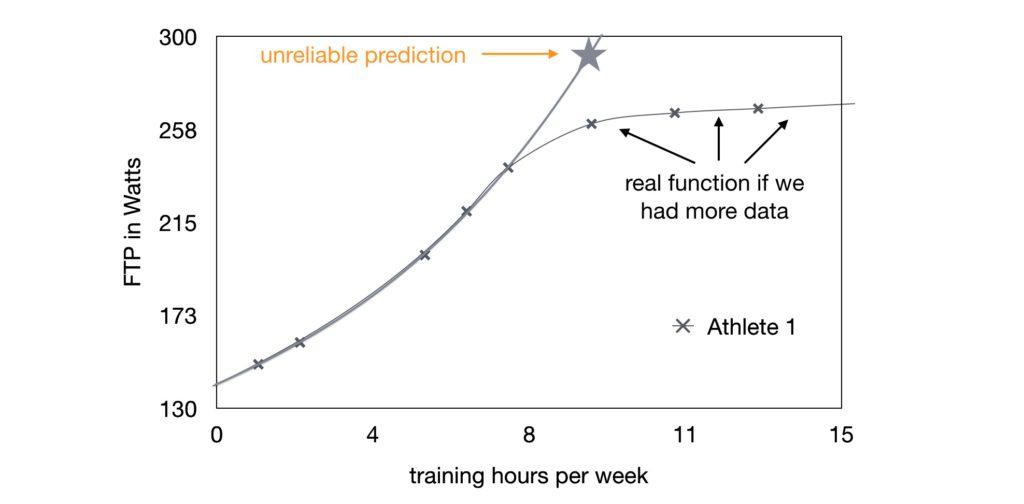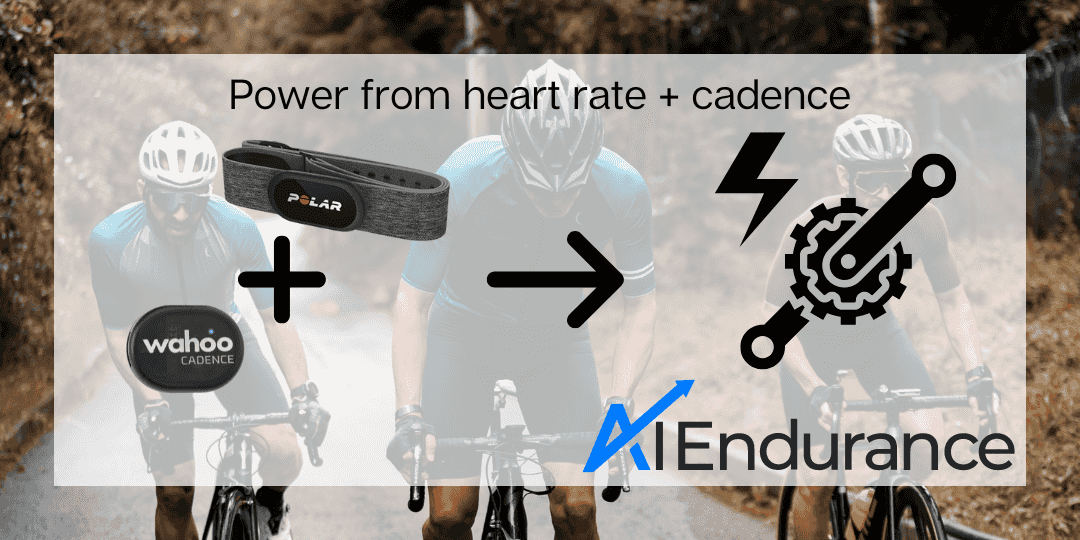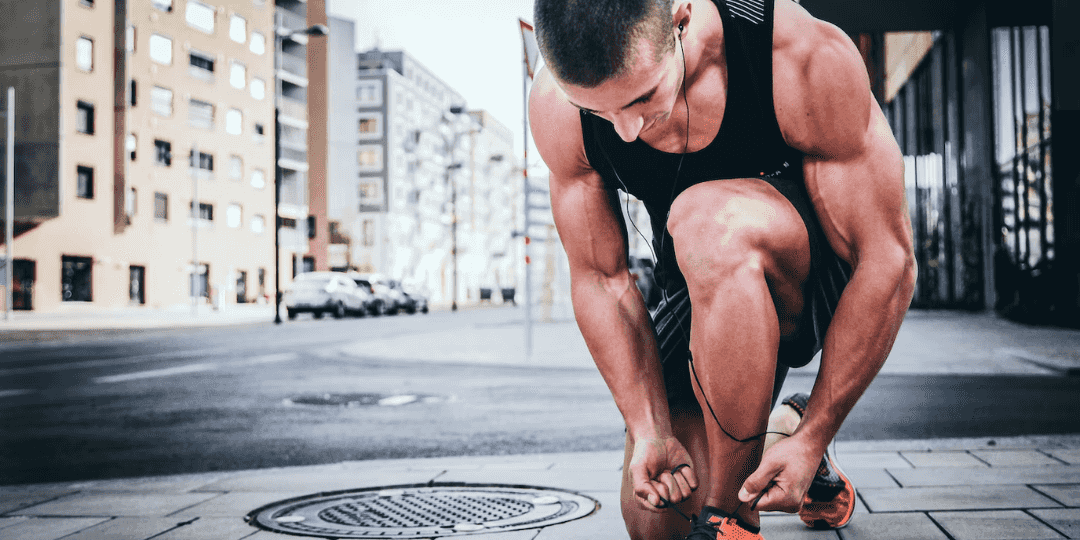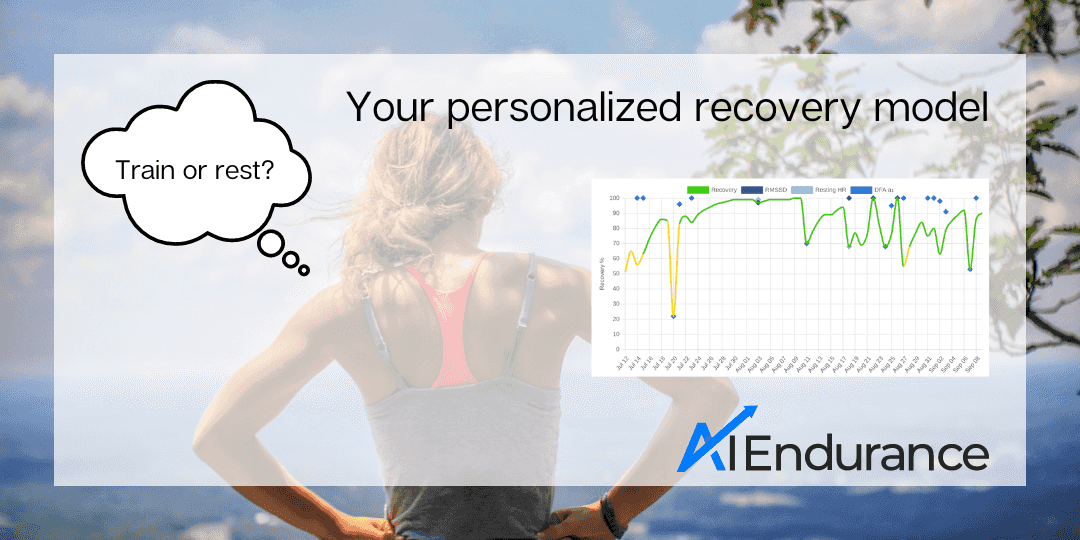
AI has great potential to help us as endurance athletes improve our training. In this post we will discuss how AI endurance training works.
If you are familiar with machine learning, feel free to skip to Section 2.
The term artificial intelligence is thrown around a lot these days, but what is it really? AI is generally defined as something broader than machine learning - think of a machine that thinks like a human. However, the vast majority of realizations of AI that we encounter in our daily lives are actually ‘just’ machine learning. So what is machine learning?
Imagine a set of data points (for example the position of your gas tank needle vs distance driven) that follow some true function that we don’t know. The more data points we collect the better we can estimate the true function. In other words, we are fitting a function to the data points.
A fit function could be a simple function such as a linear function, or quadratic function:

The process of machine learning is simply finding a good fitting function. The power of machine learning is that not only can it fit any true function, it can also find a good fitting function relatively quickly.

This allows us to fit complicated relationships that are not simple functions. Furthermore, machine learning works well even when the dataset has a very high dimensional input. In practice, this means the output can depend on hundreds of inputs. For instance, in the example above, the fill level of your car does not only depend on the distance driven but also on the speed of driving, the efficiency of the engine, how often you’ve stopped, etc.
Machine learning has been so successful and revolutionary in our lives because once you know the true function you can predict what is going to happen for a new input that you haven’t seen yet.
Now what does this have to do with endurance training? Anytime we go out to train with our GPS watches, heart rate monitors, power meters, etc we are collecting masses of data points. How long we train, at which intensities, how regularly etc are all inputs that influence our performance.
For demonstrative purposes, let’s assume that our performance only depends on the amount of time we train and ignore for a moment that there are many other contributing factors such as training structure, nutrition, sleep etc.
This is what the data may look like for two different athlete’s functional threshold power (FTP) as a function of the amount of hours they train per week:

First of all, Athlete 1 and 2 have very different responses to training. Athlete 1 is improving faster and performs at a higher baseline with less training time than Athlete 2. This is very representative for real life as training responses are highly individual depending on genetics, how long we’ve been in the sport etc - life’s not fair. Let’s teach our machine learning model this data:

The good news is that we don’t need to know all these factors that make us individual - we can learn a lot by using the empirical data to make predictions:

It appears that Athlete 1 would benefit a lot from increasing training time while Athlete 2 would barely improve and should probably look somewhere else to gain improvements, for example training structure.
Of course this does not allow us to make arbitrary predictions. We can’t stray too far from the inputs we have trained our model on or our predictions become unreliable:

This very simplified analysis serves to demonstrate how machine learning can be applied to endurance training in principle. AI Endurance takes many more variables into account than just your training time. It uses a proprietary machine learning analysis that squeezes any useful information out of your training data that is predictive of your performance.
Is such an analysis taken into account when you purchase a one-size-fits-all training plan? Most likely not, and all you need is the data you have been collecting all this time anyways.
Think about AI Endurance as a memory with huge capacity to remember all aspects and relationships between your training characteristics that allows it to quantify which direction you individually have to take to get the biggest improvements.
Machine learning allows to fit/find the true function behind datasets with high dimensional inputs.
Your individual training data is precisely such a dataset. Once the machine learning model (= fit function) is found it can be used to predict performance and identify areas where you can improve the most.
Thanks for reading!

Power meters are costly and we often can't afford one on every bike we own. AI Endurance calculates cycling power from activities without a power meter using heart rate, cadence and DFA alpha 1. The results are generally more accurate than speed based estimates such as Strava's estimated power. All you need is a heart rate monitor and ideally a cadence sensor on your bike and AI Endurance will estimate your power for every ride.

by Markus Rummel. We present the first results of AI Endurance's new capability to calculate Respiration Frequency (RF) from in-activity heart rate variability (HRV) data. RF demonstrates its potential in assessing the validity of HRV threshold determination.

When it comes to sport and fitness, it’s not all about training hard but it’s about training smart. We are often asked about training plans and if they are worth your money to invest in them.

Before every workout you should know if you're actually ready for it. Everyone responds differently to stress, bad sleep and exercise fatigue - our new recovery model makes data driven decisions about when you should train and when you shouldn't - based on heart rate variability (HRV).